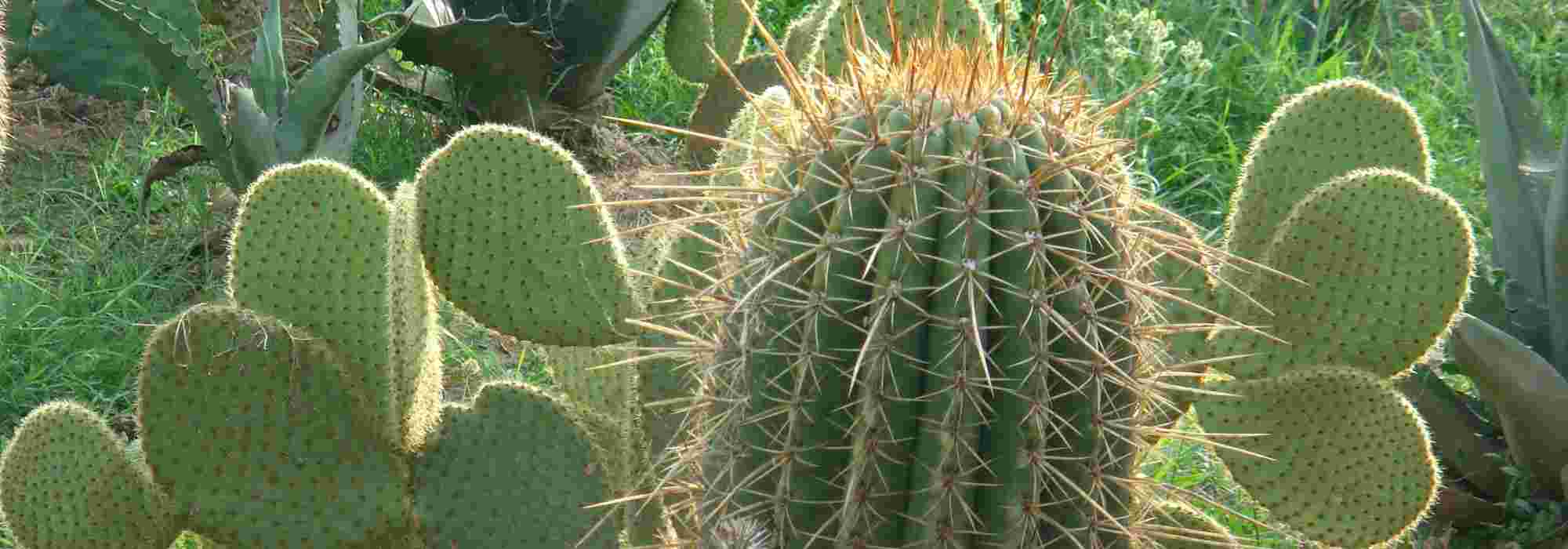
Which cacti and succulent plants for my garden?
Discover the hardiest varieties!
Contents
Cacti and succulents are distinctive plants, unusual in their shapes, with their fleshy stems covered with thorns in the case of cacti, as well as in their cultivation methods. They are xerophytic plants, whose morphology allows them to withstand heat and prolonged periods of drought. Hardy cacti are mainly grouped in the genera Echinopsis, Echinocereus, Opuntia… Cacti and fleshy plants should be installed in full sun, in a free-draining substrate, in a position sheltered from cold winds. They do not tolerate excess moisture, which makes them more vulnerable to cold and fungal diseases. Do not hesitate to create a rockery to accommodate these plants: as well as showcasing them, arranging an elevated, stony area is particularly suited to their growing conditions. You can combine them with other drought-adapted plants: lavenders, phlomis, eryngium, yuccas, kniphofias, sedums, euphorbias… in a dry, Mediterranean-style garden.
Cylindropuntia imbricata
Cylindropuntia imbricata is a very hardy cactus, capable of withstanding snow as well as temperatures dropping to -15 °C. It forms cylindrical stems, quite thin and elongated compared with other cacti, and marked by irregular midribs. They bear numerous white thorns. This cactus ramifies with time and can assume a true shrubby habit. It is a surprising, quite graphic plant, which can reach up to 2.50 metres in height! It offers in summer a beautiful vivid pink-fuchsia flowering. The flowers are cup-shaped, the petals surrounding a centre of yellow stamens. As winter approaches, this cactus empties itself of its water to better withstand the cold; its stems may therefore tend to sag, wilt… But they will right themselves in spring!
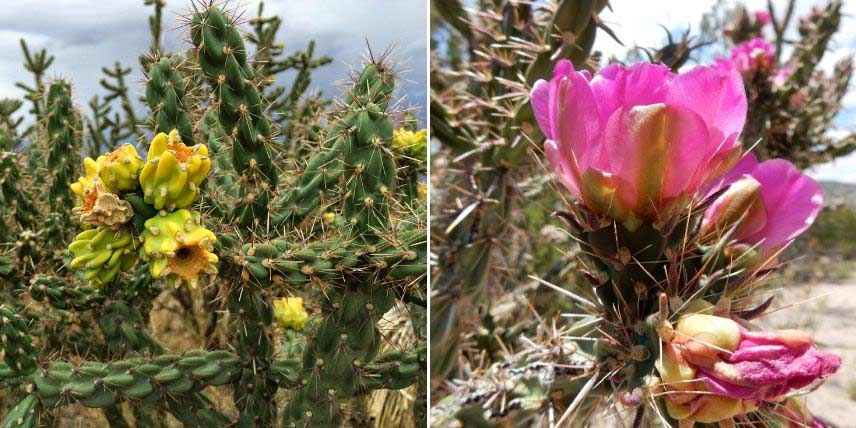
Cylindropuntia imbricata is a cactus with long ramified stems, which give it a shrubby habit! It also offers a superb flowering (photos: Skarz / Matt Lavin)
Read also
How to protect cacti in winter?Opuntia engelmanii var. rastrera
Like other opuntias, Opuntia engelmannii var. rastrera bears flattened stems, forming prickly pear pads. They are covered in numerous thorns, grouped in twos or threes, and surrounded by glochidia (tiny prickles). It has a low, spreading, even creeping habit, not exceeding 60 cm in height, but can extend to two metres in width. In spring it produces cup-shaped flowers, colour ranging from soft yellow to pale pink–salmon. These are followed by edible fruits, as with prickly pear (Opuntia ficus-indica). At ripeness, its fruits are deep purplish-red. This Opuntia has excellent hardiness, tolerating down to -20 °C, allowing planting outdoors even in relatively cold regions! It can easily be propagated by taking a cutting of a prickly pear pad, leaving it to dry for a few days, then planting it in potting compost.
For more information and advice on growing opuntias, discover our sheet Opuntia, prickly pear cactus: Planting, cultivation and care
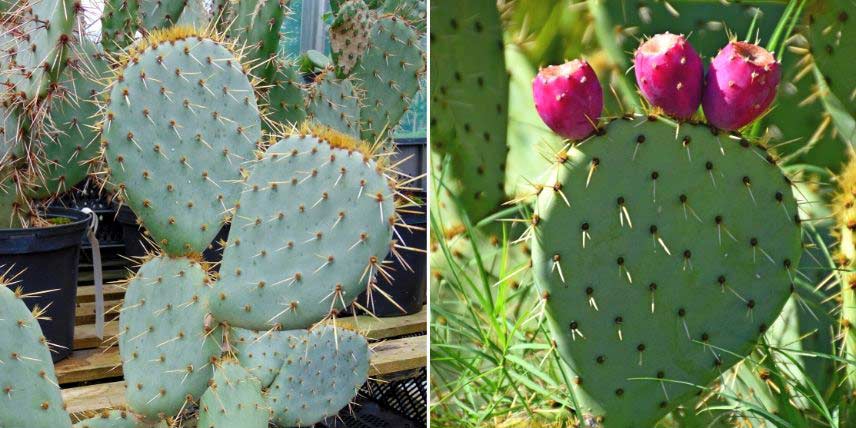
Opuntia engelmannii var. rastrera: a cactus bearing attractive thorny prickly pears and producing edible fruits
Discover other Cacti and succulents
View all →Available in 0 sizes
Available in 1 sizes
Available in 1 sizes
Available in 1 sizes
Available in 1 sizes
Available in 1 sizes
Available in 1 sizes
Available in 1 sizes
Available in 1 sizes
Available in 1 sizes
Agave havardiana
Agave havardiana is a majestic succulent native to northern Mexico. It forms a superb rosette, very rounded and regular in habit. Leaves are numerous and evenly distributed, giving a harmonious silhouette. They are broad, bluish-grey in colour, and very thick. Leaves are edged with thorns and end in a long black tip. Leaves are nicely attenuated. Very hardy, it can withstand between -15 and -20 °C. It lives for quite a long time, but is semelparous: after many years, it will flower and then die. Indeed, agaves flower only once in their life, but their flowering is impressive, and they generally produce offsets before disappearing. These can therefore take over. This agave prefers calcareous, arid and fairly stony soils.
To learn all about these beautiful succulents, discover our factsheet Agave: To plant, to grow and to maintain.
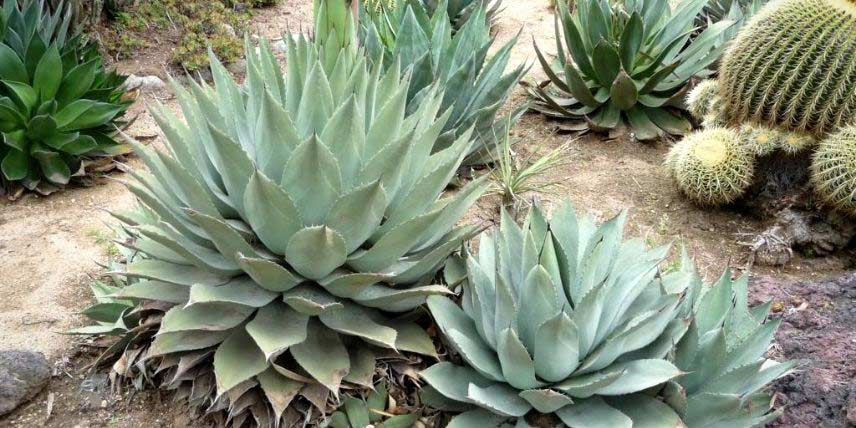
Agave havardiana takes on a majestic silhouette!
Read also
How to plant a cactus in a pot?Aloe striatula
Aloe striatula is a shrubby aloe reaching up to 1.50 metres in height and 2 metres in spread at ripeness. Its leaves are long and narrow, fleshy and very tapering. It produces an abundant yellow flowering in late spring, in the form of elongated spikes, composed of numerous tubular flowers. This very exotic flowering is somewhat reminiscent of kniphofias! Aloe striatula is native to South Africa, where it grows in mountains up to 2,000 metres altitude. Relatively hardy, it tolerates down to -12 °C in free-draining soil. Place it nonetheless in a sunny spot.
To learn all about Aloes, read our fact sheet : Aloes : Planting, to grow and care.
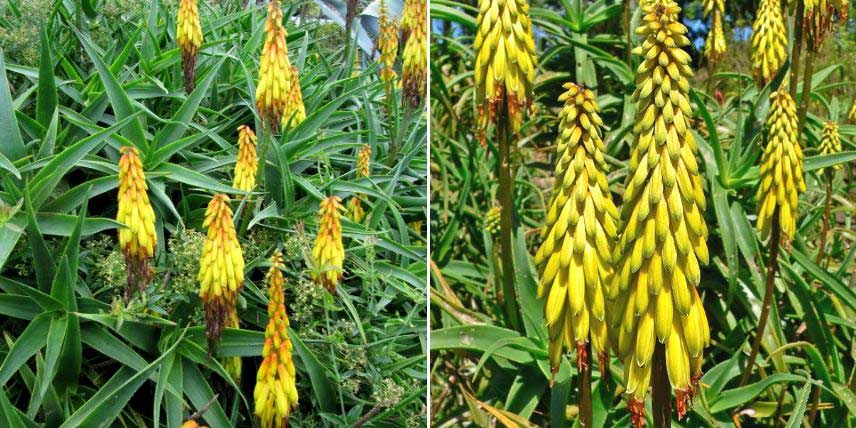
Aloe striatula offers a superb flowering in yellow spikes (photos: Leonora Enking / Stan Shebs)
Sempervivum 'Gold Nugget'
Sempervivum ‘Chick Charms Gold Nugget’ is a very distinctive houseleek with warm hues. This succulent plant forms rosettes made up of small, fleshy, imbricate leaves, orange–red in colour. Its tones change with the seasons, ranging from green to gold, red and orange. Colours become more intense in winter! It grows to no more than 10 cm tall, but can spread over time by producing new rosettes, thus forming a tapetum 30 cm in diameter. It is a small, very graphic plant that will bring a lot of colour to a rockery! It needs very little substrate and can be planted between rocks or on a low wall. It also offers a lovely flowering in summer, producing a flowering stem bearing small, star-shaped purplish-pink flowers. Like other houseleeks, it is completely hardy, tolerating between -15 and -20 °C! You can pair it with other varieties, such as Sempervivum arachnoideum, Sempervivum calcareum and Sempervivum ‘Othello’.
For more tips on growing houseleeks, see our sheet Sempervivum, houseleek: Planting, growing and caring for and our video on houseleeks
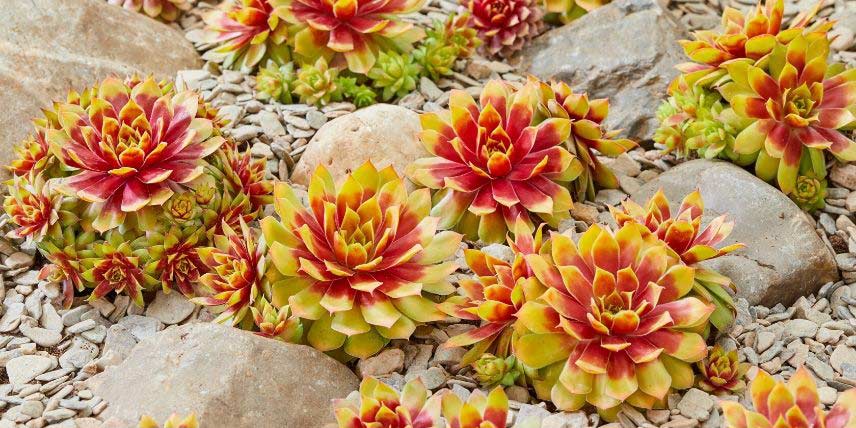
Houseleek ‘Gold Nugget’, a variety with surprising, very luminous hues!
Opuntia phaeacantha Mojavensis
Opuntia phaeacantha Mojavensis bears prickly pear pads (flattened, fleshy stems) of bluish-grey colour. They are punctate with numerous long white thorns, tinged red at the base. These thorns are surrounded by tiny prickles called glochidia. This cactus can reach up to 1.50–2 m in all directions. Moreover, it produces splendid cup-shaped flowers in spring that appear at the ends of the prickly pear pads. They have a lovely pale yellow colour, shaded with red inside the petals. As with the prickly pear, they are followed by edible red fruits. Before eating them, however, be sure to remove the prickles that cover them. It originates from the western United States, specifically the Mojave Desert, hence its name. It tolerates down to −20 °C and is thus fully hardy. It is a robust plant and fairly easy to grow, provided it is planted in well-drained soil.
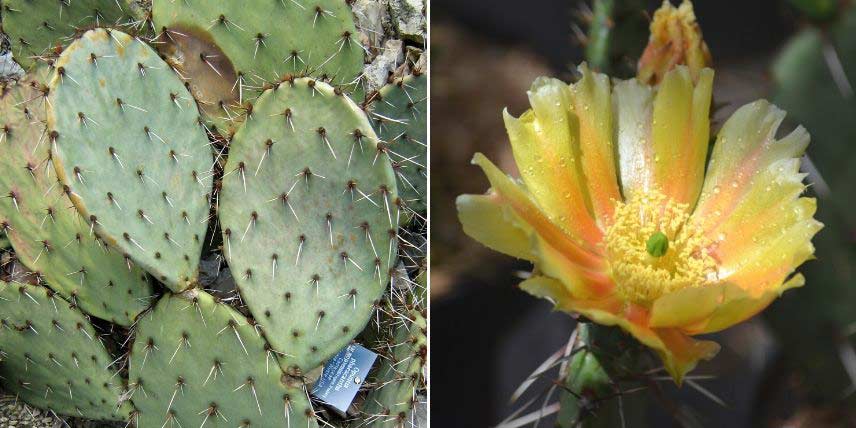
Opuntia phaeacantha Mojavensis forms beautiful prickly pear pads and elegant orange-yellow flowers (photos: Feloidea / promesse de fleurs)
Echinopsis subdenudata
Native to South America, Echinopsis subdenudata is a cactus slightly less hardy than previous varieties: it nevertheless tolerates between -5 and -10°C in draining soil. It has a relatively rounded shape and reaches 15 to 20 cm in diameter. Its stems form midribs regularly punctate with white, downy areoles, very decorative. It also has the advantage of bearing no thorns. Flowering is also noteworthy: it bears large, pure-white, trumpet-shaped flowers. They are fragrant and open at night. Flowers do not last long, but are often quickly succeeded by other flower buds. This is a very elegant and original cactus! Echinopsis prefers calcareous, draining soils.
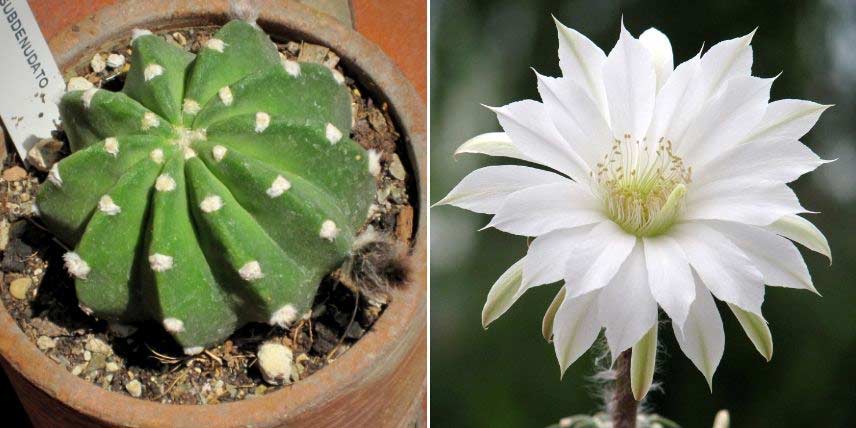
Echinopsis subdenudata: a small rounded, graphic cactus offering a splendid pure-white flowering! (photos: Petar43 / rozsagab)
Further reading
Discover everything you need to know about growing them in our complete guide: Outdoor cacti and succulents.
- Subscribe!
- Contents
































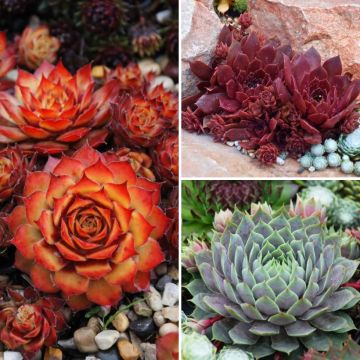
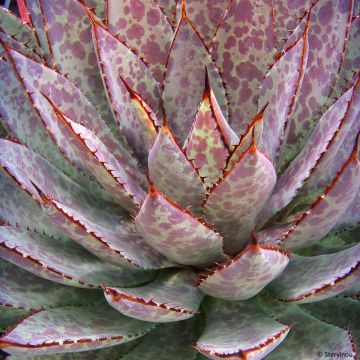
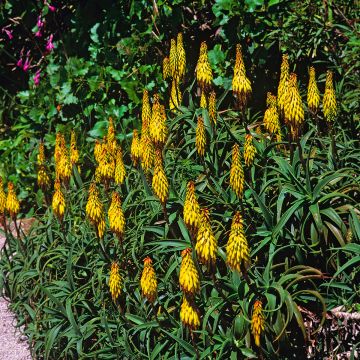
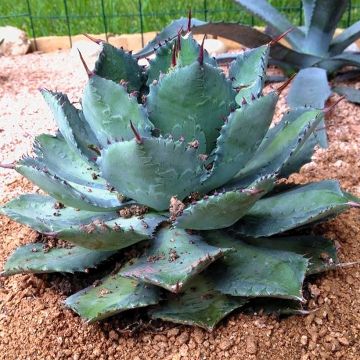
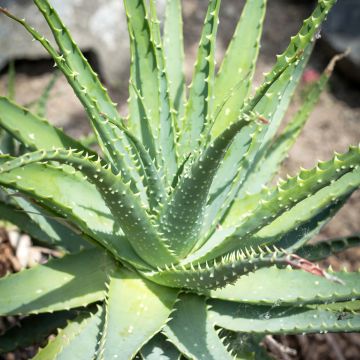
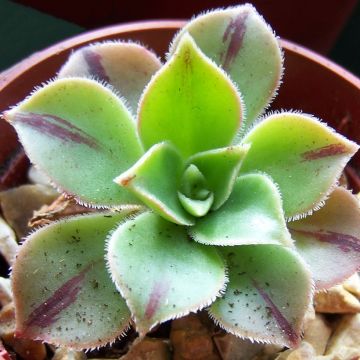
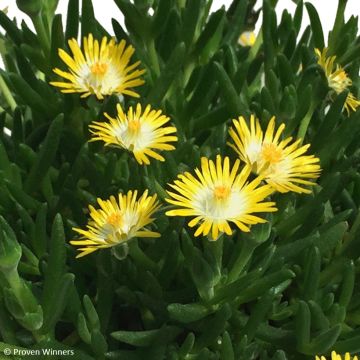
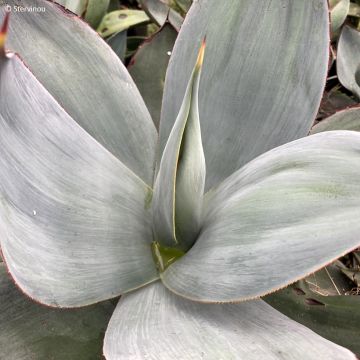
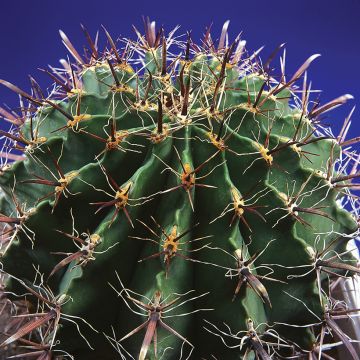
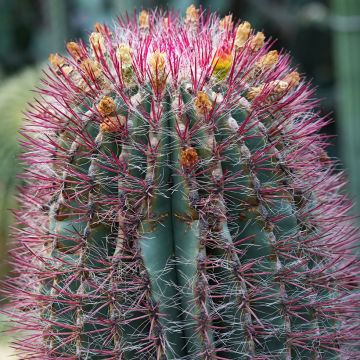
Comments